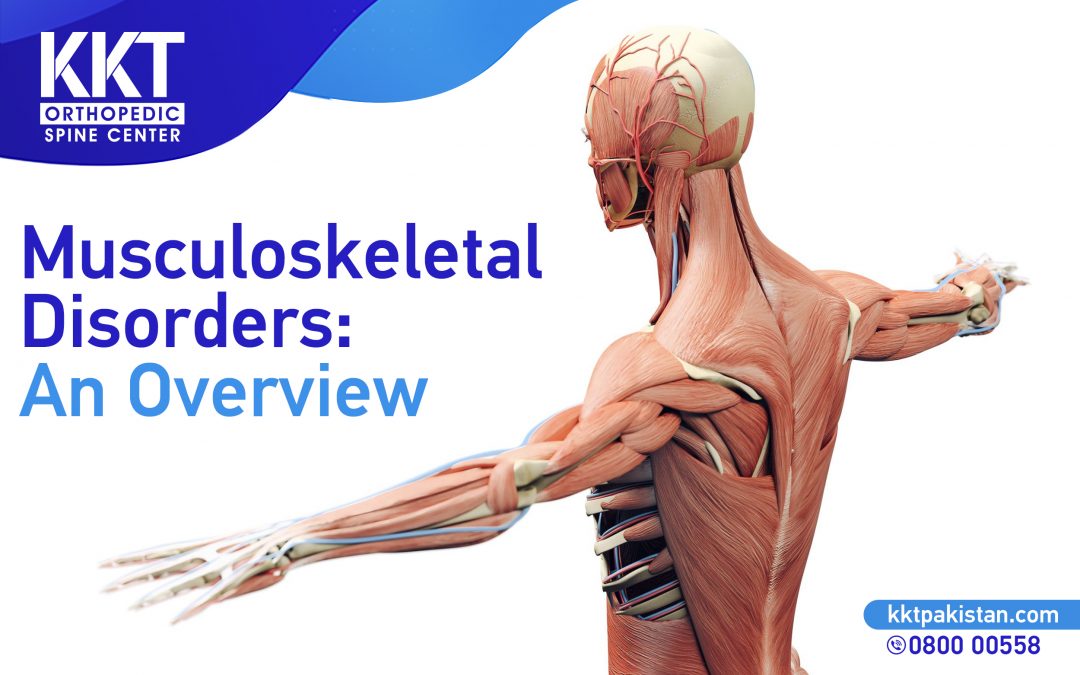Musculoskeletal Disorders are the diseases related to muscles, joints, cartilage, spinal discs and nerves. Diseases related to spine and back are called spinal disorders. Brain controls the whole body via spinal cord. Spinal cord transmits messages all over our body. It is made up of several bones called vertebrae. Each vertebra is separated by a cartilage disc. Our spine is divided into four parts:
- Cervical (C)
- Thoracic (T)
- Lumber (L)
- Sacral (S)
Musculoskeletal Disorders: –
There are many known musculoskeletal and spinal disorders. For example:
- Sciatica
- Scoliosis
- Kyphosis
- Bulging Disc
- Fibromyalgia
- Osteoarthritis
- Herniated Disc
- Spinal Stenosis
- Rotator Cuff Injury
- Degenerative Disc Disease
1. Sciatica:
Sciatica is pain caused due to the pressure or irritation to the sciatic nerve. This pain radiates from lower back and buttock down to the legs. The symptoms of sciatica are mostly result of lower back (L4-S1 vertebrae) disc disorder. It is a relatively common form of lower back and leg pain. In women, sciatica may also occur during pregnancy because of the weight of fetus pressuring the sciatic nerve while sitting.
The most common cause of sciatica is herniated or slipped disc. Sciatica can also be a result of bone spurs and spinal stenosis in lumbar spine. Sciatic nerve is the longest nerve in the human body, extending from lower back to the legs. The five nerve roots (two from lumbar spine and three from sacrum) form the right and left sciatic nerve. Risk factors of Sciatica includes:
- Age: with time the discs deteriorate, developing bone spurs.
- Sitting for prolonged periods (sitting disease), puts pressure on the nerve.
- Diabetic Neuropathy leads to nerve damage in hands and legs causing sciatica.
2. Scoliosis:
Scoliosis is an abnormal side-to-side curve of the spine (spinal deformity). This condition occurs when your spine is either in “S” or “C” shape (rotated sideways). People with scoliosis have uneven shoulders. In most cases, scoliosis is mild but can increase as the child grows. Severe curvature can also affect the lungs or coronary heart function. Children with mild scoliosis need to wear braces to stop the curve.
Scoliosis can affect any part of the spine however it is commonly found in upper or lower spine. There are two major types of scoliosis; structural and non-structural.
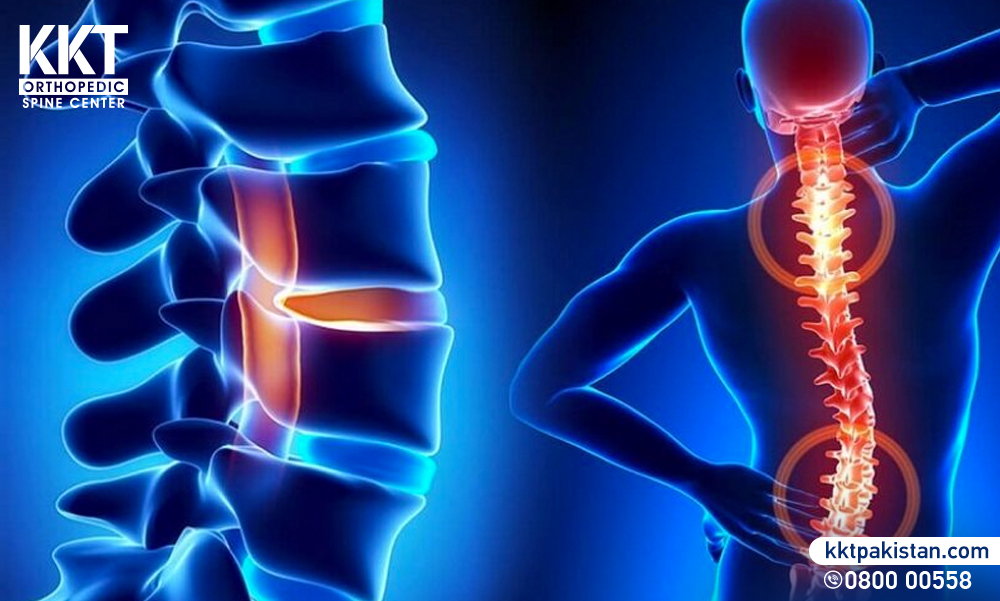
Structural Scoliosis has four types, including: –
- Idiopathic Scoliosis: Adolescence or earlier in childhood
- Congenital Scoliosis: Present at birth
- Degenerative Scoliosis: among adults due to degeneration
- Neuromuscular Scoliosis: Among people with neuromuscular disorders (like: muscular dystrophy or cerebral palsy)
3. Kyphosis:
Kyphosis is a forward/outward rounding of the upper (thoracic) spine. Similarly, the severe inward curvature in neck or lower back are called lordosis. This rounding appears as a hump on the back. This deformity is also known as hunchback. Usually, patients need to exercise and wear braces to improve the posture. People with severe stage can also develop breathing problems. Severe spinal curve requires surgery to reduce symptoms.
Naturally, spine contains curves that help you to balance. If these curves increase or decrease than the normal curvature, it’s difficult to stand straight. Natural curve of thoracic spine is between 20-45 degrees. A spinal curvature of more than 50 degrees is a sign of kyphosis.
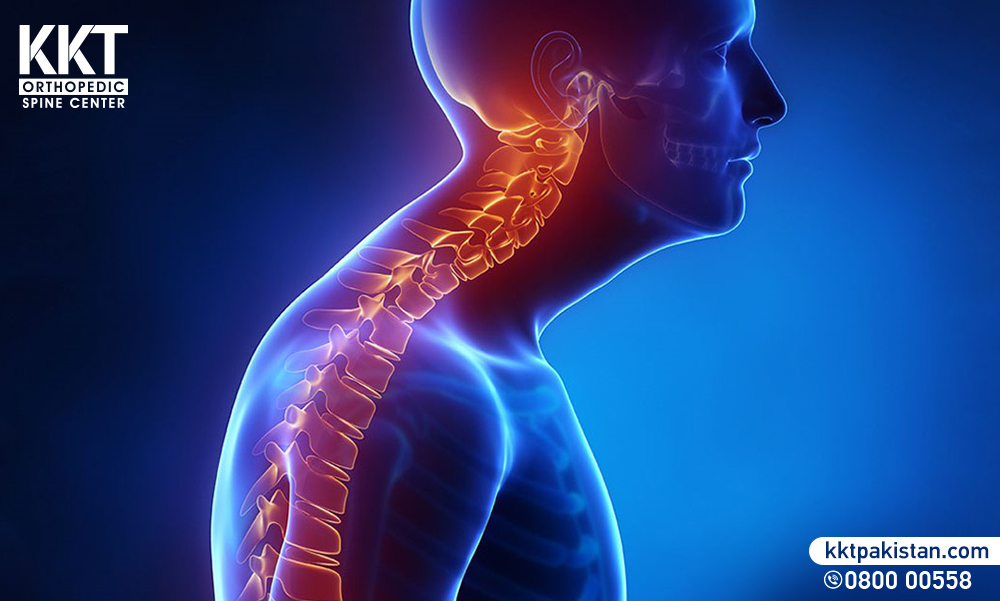
Major types of Kyphosis include:
- Postural Kyphosis: Bad posture and slouching stretches the muscles holding vertebrae. Hence pulling them out of their normal position.
- Congenital Kyphosis: Present at birth because spine doesn’t develop properly.
- Scheuermann’s Kyphosis: Vertebrae have a wedge shape causing the spine to look rounded. This type of kyphosis is usually diagnosed in teens and boys (more than girls).
4. Bulging Disc: –
Our spine consists of vertebrae with intervertebral disc in between. It is one of the musculoskeletal disorders in which disc moves from its original position. It occurs when the spongy intervertebral disc is compressed and bulges out. Patients might have minor or no pain as it is not at the severity level i: e: – Herniation. Disc Bulge can also lead to numbness and weakness in legs. Age-related wear and tear can result in bulging discs as well.
Spinal decompression in one of the treatment recommended by the doctor. In a bulging disc, the outer layer (annulus fibrosis) remains intact unlike in herniated disc. However even though the outer layer is intact, the bulge can still compress the nerve.
Some of the Symptoms include:
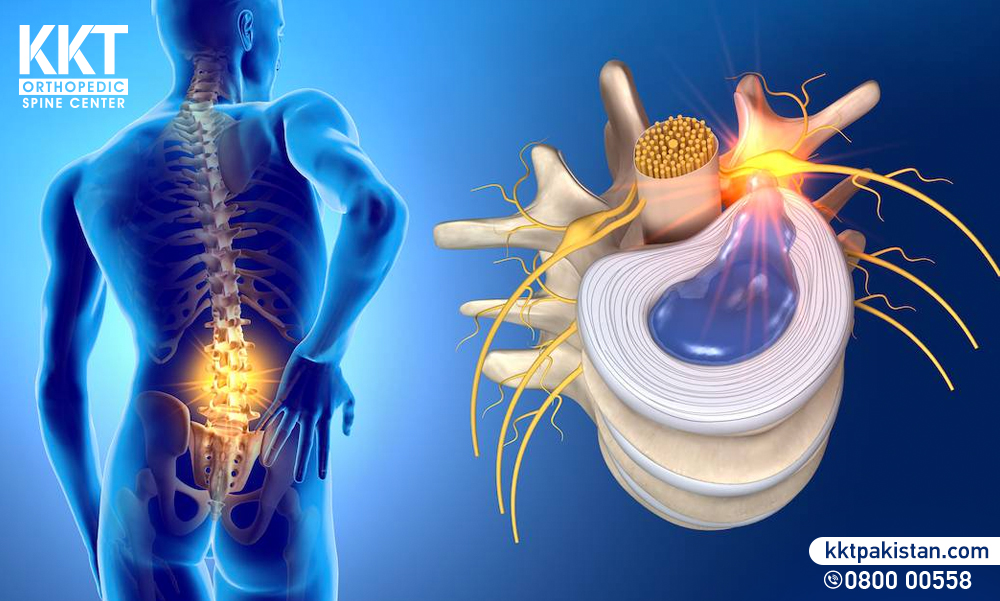
Symptoms include:
- Reduced Mobility in legs
- Pain in feet and thighs (not common)
- Difficulty in lifting things and walking
- Tingling in fingers, neck and shoulders
- Back pain as well as sciatica (if disc bulge is located in lumbar spine)
5. Fibromyalgia:
Fibromyalgia (also referred as widespread pain) can be treated and managed, effectively. It is a condition which co exists with various other conditions. Fibromyalgia can be caused due to genetics, mental stress, surgery or any physical injury or trauma.
Fibromyalgia is more common among women due to a hormone called, estrogen. Because of the high levels of estrogen, brain’s natural painkillers work more effectively during a pain-related situation. Due to a drop in the levels of estrogen, these pain killers don’t work as effectively. Symptoms of fibromyalgia often begins after a physical trauma or surgery. Primary symptoms include:

- Fatigue
- Problem in sleeping
- Pain all over the body
- Headaches specially migraines
Risk factors of Fibromyalgia include: –
- Age: – Risk of getting Fibromyalgia increases as you get older.
- Rheumatoid Arthritis (RA): – People with RA are more likely to have Fibromyalgia.
6. Osteoarthritis:
Osteoarthritis is one of the major forms of Arthritis. It is a result of breakdown of the cartilage in our joints and bones over time. Osteoarthritis majorly affects the joints that bear weight including hip joints, knee joints and spine. It can also affect any other joint in your body. Osteoarthritis often affects older and obese people. It is a degenerative joint disease. In men, osteoarthritis usually occurs before 45 years. On the other hand, in females it may occur after 55 years.
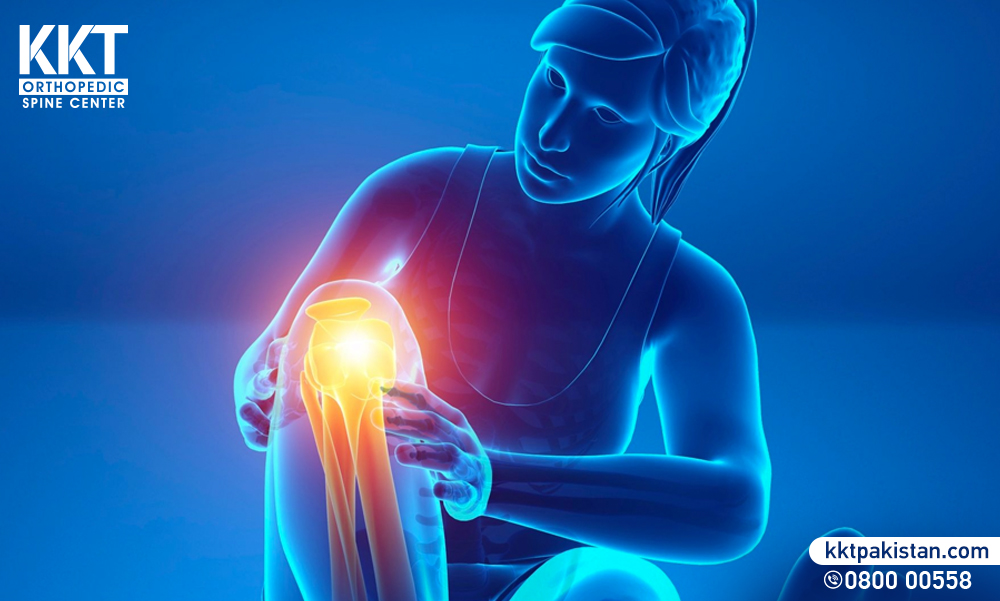
Symptoms include:
- Stiffness
- Swelling
- Pain in the joints
- Loss of flexibility
- Joint pain and tenderness
7. Herniated Disc:
Herniated Disc (also known as slipped disc) is a portion of nucleus that is pushed out of annulus fibrosis as a result of a tear or crack. Surgery is usually not a compulsion for herniated disc. Disc herniation can take place at any part of the spine however is more common in lower spine. It can also affect the cervical spine. Disc herniation can occur due to an injury as well as age-related degeneration.

Symptoms of herniated disc depend on the location (neck or lower back) and whether it is putting pressure on any nerve. If any nerve is not being compressed by herniated disc, patient might not feel any pain. Common symptoms include:
- Pain in arm and leg
- Weakness in muscles
8. Spinal Stenosis:
Spinal Stenosis is one of musculoskeletal disorders in which the space between spine narrows down. Hence, putting pressure on the nerves traveling through the spine. It usually occurs in the neck region (cervical spine) and the lower back region (lumbar spine). However, not everyone with spinal stenosis bears pain or any such symptoms.
Spinal stenosis can be caused due to degeneration among people in their 50s and 60s. Another reason could be an injury or trauma to the spine. Types of spinal stenosis include:
– Cervical Stenosis:
Cervical spine consists of seven vertebrae (C1-C7). This is a condition in which the narrowing of spine takes place in the neck region. This causes damage to the spinal cord. Cervical Myelopathy is due to spinal compression caused by cervical stenosis. Pinched nerves due to cervical stenosis is known as Cervical Radiculopathy. It occurs in adults 50 and above.
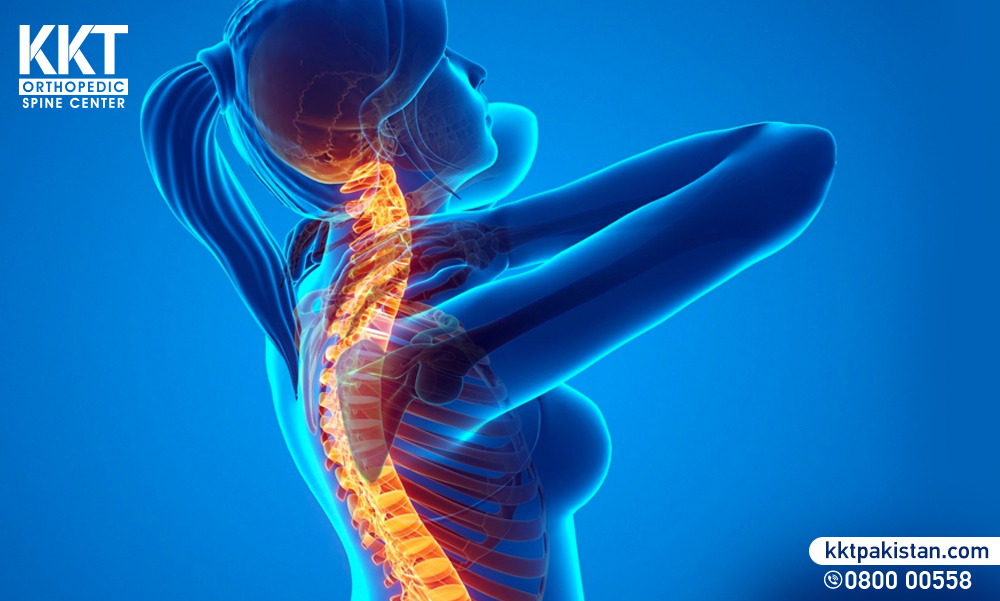
Symptoms of cervical stenosis include: –
- Neck pain and stiffness
- Weakness in arm, shoulder and legs
- Numbness in shoulders, arm, hand and legs.
– Lumbar Stenosis:
The narrowing of spine in the lower back area is causes lumber spinal stenosis. Lumbar stenosis usually occurs in patients who are 60 and above. It causes pressure on your nerves and spinal cord. Most common causes of lumbar stenosis include, Spinal asymmetry and arthritis. This condition can also occur in younger patients.
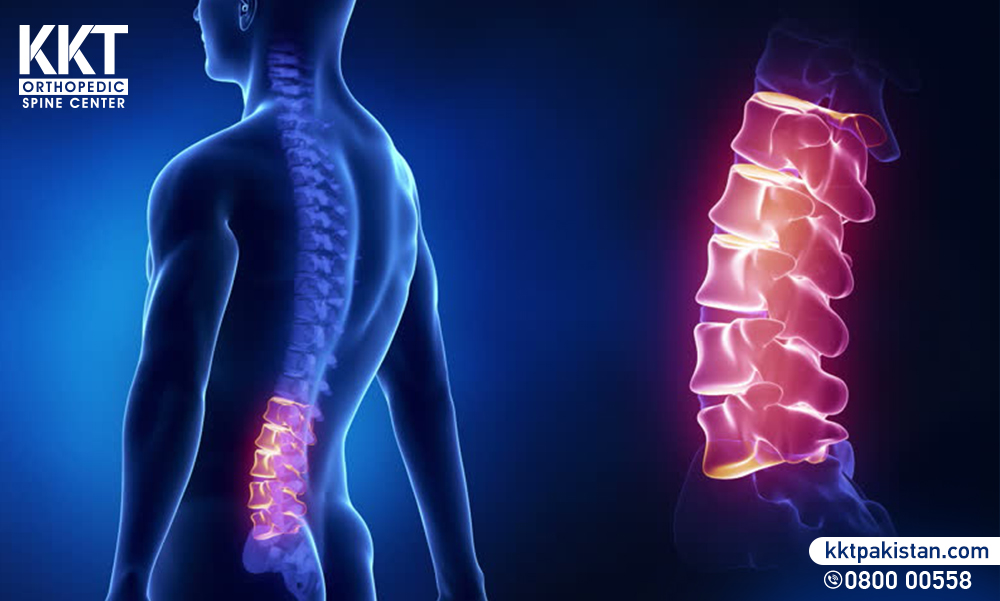
Symptoms of lumbar stenosis include: –
- Back pain
- Less sensation in feet
- Weakness in legs and feet
- Burning pain in the buttocks radiating down in the legs (sciatica)
9. Rotator Cuff Injury:
Rotator cuff is a group of four muscles and tendons. This is the most commonly injured part specially in sports like tennis. Rotator cuff injury is a common type of musculoskeletal disorders. It can be result of a substantial injury to the shoulder. One of the major causes of rotator cuff injury could be lifting heavy objects hence damaging the tendons. Rotator cuff tears or injuries are mostly caused due to overuse of joint. These can be of three types:
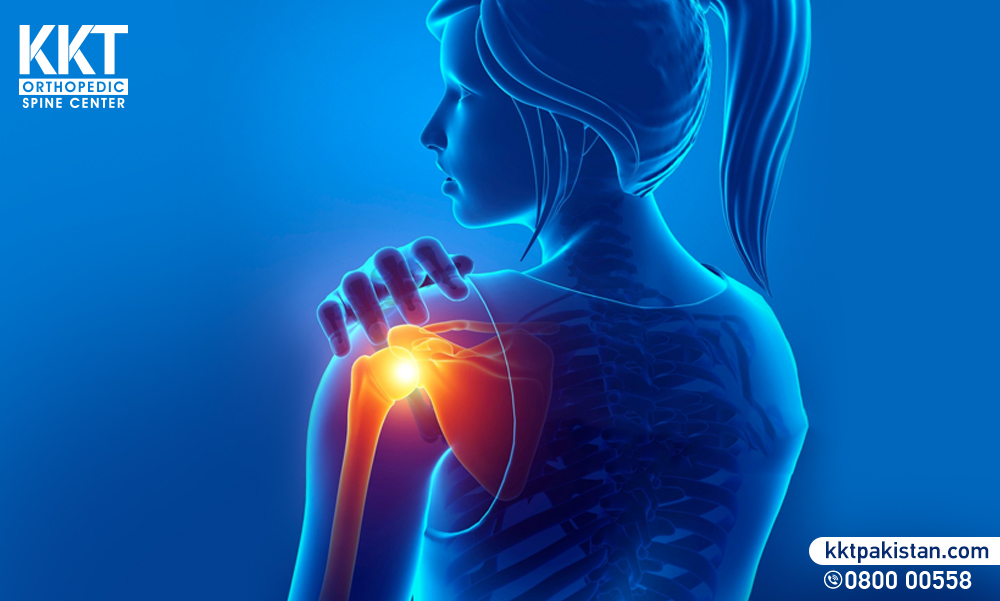
- Tendinitis: caused due to overuse of the joint. E.g., tennis players.
- Bursitis: A common injury due to inflammation in bursa (fluid-filled sacs sitting between tendons of rotator cuff and shoulder bones)
- Rotator Cuff tears: As a result of acute injury or overuse. It occurs when the tendons of rotator cuff, tear due to overstretching. This rotator cuff tear can be partial or complete.
10. Degenerative Disc Disease:
Another common type of musculoskeletal disorders is Degenerative Disc Disease. The intervertebral discs are the shock bearers/absorbers. This condition involves breaking down of the discs with time. This age-related wear and tear of the discs in one or more vertebrae can lead to severe pain. Even though the name says “disease”, degenerative disc is a condition that happens due to aging. Degenerative disc (in most cases) also can be managed easily via non-surgical treatment options.
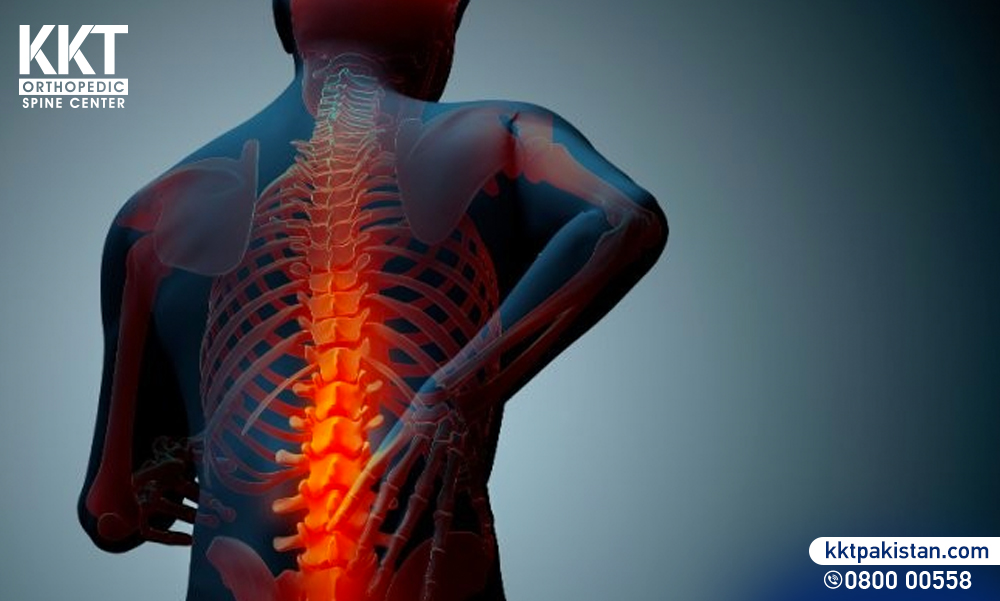
Degenerative disc doesn’t usually have any symptoms. Early symptoms include:
- Pain in thighs and lower back.
- Pain gets worse on sitting and walking
- Numbness and weakness in back and legs
- In some cases, numbness and tingling in arms.
KKT Pakistan offers a revolutionary non surgical treatment for the victims of spinal related diseases. KKT focuses on the diagnosis and treatment of all spinal disorders via Personalized Quantum Acoustic Waves (Sound waves).

